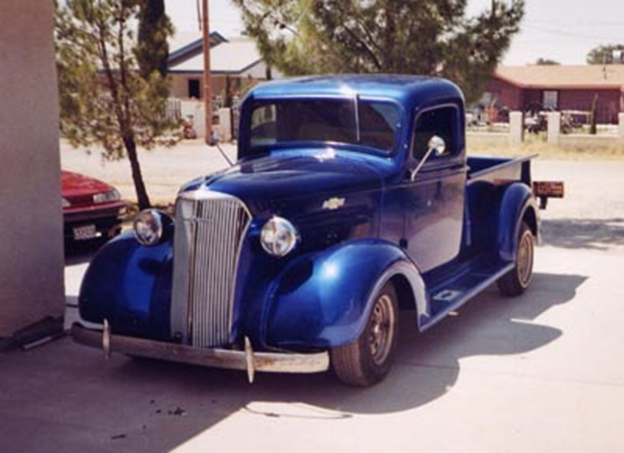Cars and fight
Let’s divert the topic a bit and enjoy the hiatus in production of cars to ponder how this period was. It is interesting and curious and helps to understand a little about the way of being and acting of those who are born in the United States.
Another entity, the Automotive Council for War Production (Automotive Council for War Production) was formed in April 1942, with the participation of representatives from the automotive industry, to facilitate the distribution of resources, knowledge and labor-intensive in contracting the production of defense equipment. It was also a representation of the industry able to negotiate with the War Production Board of product prices and workers’ wages.
Thus, the vehicle industry was reorganized and equipped to manufacture tanks, military trucks, jeeps, planes, bombs, torpedoes, helmets and ammunition. Applications for large scale production of this ordnance were issued directly by the government. The official commitment and patriotic feeling provoked a rapid transformation in American industrial park, almost immediately, turned its assets in proper order the new machines. Even pieces of semi-finished cars were shipped to steel mills to be melted down and made into new steel plates needed for the new products. Old molds, dies, conveyors and tools that were applied only to civilian products systems were dismantled and put aside or simply turned into scrap.
Tires are for the war, save them
Another federal office, which handled the administration of prices (Office of Price Administration), decreed the rationing of gasoline and tires and a new national speed limit of 35 mph (56 km / h) was imposed in order to reduce gasoline consumption and thus maintain the supply of natural rubber and gasoline directed to the war effort.
This action, known in some states as Patriot Speed Limit, was both politically daring and brilliant, allowed an effective economy, necessary in time of war, and even gave the possibility of an ordinary citizen, quiet and dedicated only to their tasks routine, Patriot way contribute to your country, even away from the battlefront.. What times these were and what country is that!
Speed Limit Patriot
More campaigns populated Americans in the war effort. With incentives to carpool, objective to optimize the displacement of civilians to the maximum vehicles suggestion to restrict travel or unnecessary travel, the government bombed its population with advertising campaigns to sensitize it as much as possible on resource savings.
Advertise on the American war effort: carpool giving as an example the transport of troops.
In April 1944, only 30,000 new vehicles civilians had remained of the stock held at the beginning of the war. Some months later, still in 1944, with the promising news of a possible end of the war, Ford, Chrysler, Nash, and GM were allowed to return to work on developing civilian models, since there was no commitment of resources engaged in military production. Only staff involved in the planning phase could be allocated in the resumption of activities. There was also a limit on the amount of material that could be diverted for use in prototypes and experimental vehicles.
Production of bombers in a GM plant
During the war the car companies and oil did not interrupt their advertising campaigns, lest he had lost memory of their brands in the period without production of new units and gasoline rationing. Disclosure also took advantage to strengthen the role of company’s patriot, proud to participate in the production of war; their advertising pieces evoke the ordnance where it was produced before cars came out to confirm that the industry was doing its part in the fight.
The Chevrolet resumed production in Norwood, Ohio, in August 1944. A small amount of light trucks and medium civil configuration passed to divide the production line with the 4×4 trucks with military destination. The half-ton models were then identical to the Black-Out 1942 except for a new gearbox and four-speed larger tires.
Sometime later, a week after the war’s end, the GM plant in Saint Louis, Missouri, resumed normal production of Chevy Trucks. As there were still units of military vehicles in the manufacturing process on the assembly line, workers dismantled components of these vehicles in order to use the newly resumed production rate of civilian trucks. Thus, Chevrolet managed to meet an eager and needy by market and new models could replace the fleet of commercial tired prewar. In this step, Chevy pickup rolled off the assembly line in 1946, with the return of the chrome finish from May 1 of that year.
Advanced Design Series
Exactly one year later debut new series called Advanced Design and competitor Ford could only launch its new model of postwar in late 1947. Thus, Chevy kept its primacy and market advantage in volume in this segment. For versions 1950 came up the telescopic dampers that tuning the front suspension system, hitherto rigid axle, springs and dampers semielliptical type arm.
Following the successful launch of Chevrolet Bel Air 1955 and its new V-8 small block, the Chevy truck began to offer the same engine and Power glide automatic transmission as optional equipment, both first seen this type of vehicle. Line 1956 also passed a visual showing renewed with the integration of front profile of the doors and fenders also debuted Cameo version that was actually a customization made with composite plastic reinforced with fiberglass material used in this version due to the expected low volume production. The Cameo had a bucket with flat side, incorporating the rear fenders and no longer presenting the kickstand.



